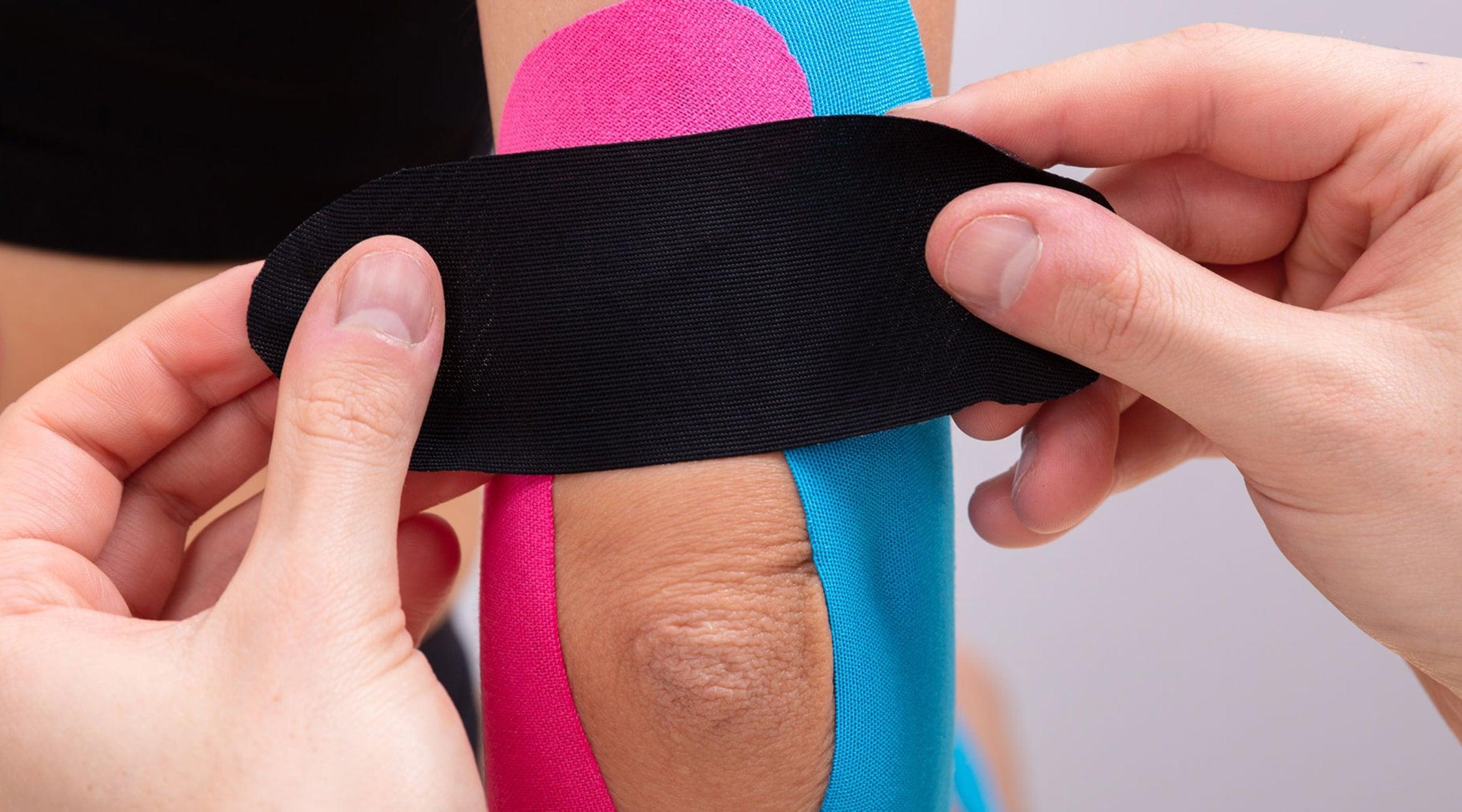The good news is that multiple treatments exist for tennis elbow and surgery is rarely necessary. Of the over-the-counter options, kinesio tape, or KT, is one simple solution that may provide relief when used in conjunction with other therapies.
How Kinesio Tape Works
Kinesio tape differs from standard athletic tape. A blend of cotton and nylon, it is more flexible than stiff athletic tape and does not restrict range of motion, but provides light support. Physiotherapists, chiropractors and athletic trainers use it for a variety of injuries, and although evidence supports its efficacy, more research is necessary.Here’s how it works:
- Decreases pressure: For tennis elbow, KT can reduce the load on the elbow when the wrist extensors contract, which minimizes irritation of the tendon where it interacts with the lateral epicondyle of the bone. By creating minimal additional space in the joint, KT can decrease nagging friction.
- Alters perception of pain: Because KT causes a slight stretch on the skin and underlying tissues, it delivers light pressure with decompression where it’s applied. This can interrupt pain transmission or change how pain signals are processed by the brain.
- May increase circulation: By creating extra space under the skin, KT is thought to facilitate circulation of blood and lymph, which can help stimulate healing.
- Enhances proprioception: When you wear KT, you naturally are more aware of this area on the body, so you’re likely to move more carefully and ergonomically.
Benefits and Applications
First discuss with your healthcare professional if using KT is suitable for your tennis elbow treatment plan. Among its benefits, KT:- Is inexpensive and widely available
- Doesn’t require a prescription and is unlikely to cause side effects
- Can be used to prevent and treat common injuries
- Can decrease the likelihood of injury aggravation
- May improve athletic performance
- Can help re-train muscles and restore function
- Allows an earlier return to activity/sports
- Lowers the risk of injury recurrence
- Bone fractures
- Open sores or cuts
- Circulatory or sensory problems
- Allergies to tape or adhesive
- Cancerous growth or diabetes
How to Tape Tennis Elbow with Kinesio Tape
For best results, have your healthcare provider tape your injury before you try to on your own. First clean and dry the area to be taped, and trim or shave excess hair. Cut the corners on the ends of the tape to round them so the tape doesn’t catch on clothing or peel off.Slightly different recommendations exist for how to tape tennis elbow with KT, so practice with your physical therapist or chiropractor, or check out multiple videos available online.
Here are some general instructions on how to tape tennis elbow with KT, using a vertical strip and a horizontal strip.
Vertical from mid-forearm to mid-tricep
- Extend the arm in front of you with wrist flexed toward the ground and cut a piece of tape the length of the mid-forearm to the middle of the upper arm/tricep.
- With the edges rounded, cut a two-inch anchor at the bottom.
- Apply the tape at the forearm, rub in the anchor, and pull to achieve about a 20% to 50% stretch.
- Continue to rub the tape up to the mid-tricep; cut another anchor here and rub to warm adhesive. The tape should cover the lateral epicondyle – the bony protuberance on the outside of the elbow.
- Cut another shorter piece of tape that lie horizontally from the inside to the outside of the elbow joint.
- Stretch the tape 20% to 50% so that the middle lies over the epicondyle and that each end touches skin (and not the vertical strip of tape).
- Rub in the tape to warm the adhesive and ensure that it lies flat.
- Apply some oil (like baby oil or olive oil) or lotion on top of the tape to loosen the strip.
- Nudge up one end of the strip, and press down on your skin to separate it from the tape.
- Pull the tape back against itself, rather than straight up away from you. Compress skin gently while pulling the tape back in the direction of the end tab.
- Walk your fingers along your skin as you go.
- Remove it slowly. Don’t yank.
This wearable device automates a proven physical therapy treatment called instrument-assisted soft tissue manipulation (IASTM), and is easy to use for 10 minutes per day, three times per week for eight weeks. In a patient trial of the Fiix Elbow, 96 percent of participants experienced reduced pain, with an 85 percent increase in grip strength and a 76 percent improvement in functional activities.



Share:
Which is Better for Tennis Elbow, the Fiix Elbow or TENS?
Which is Better for Tennis Elbow, the Fiix Elbow or TENS?